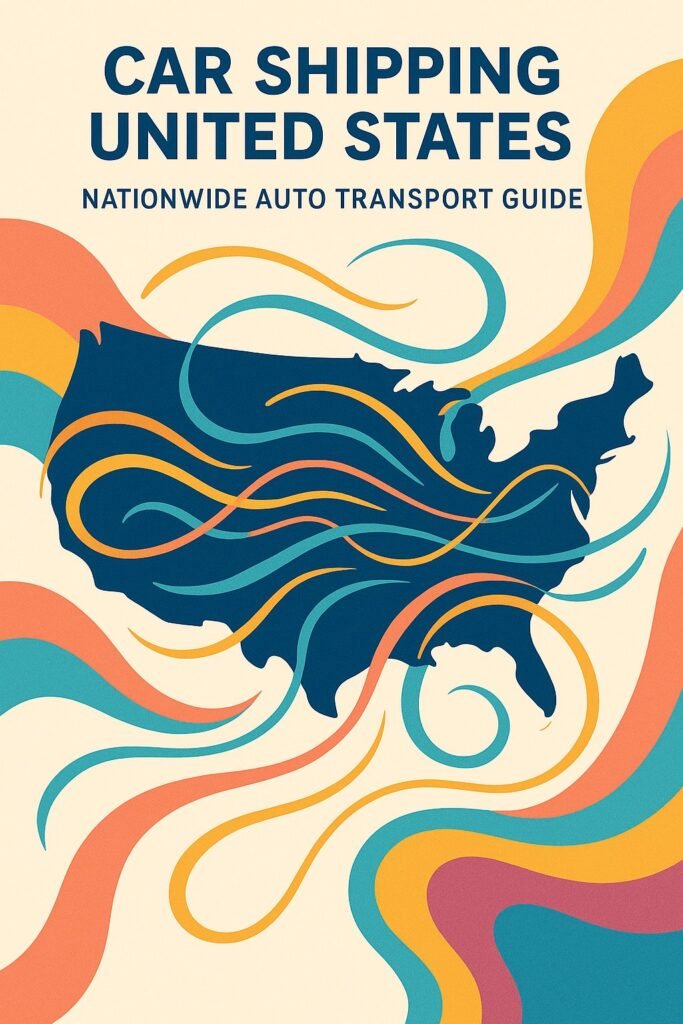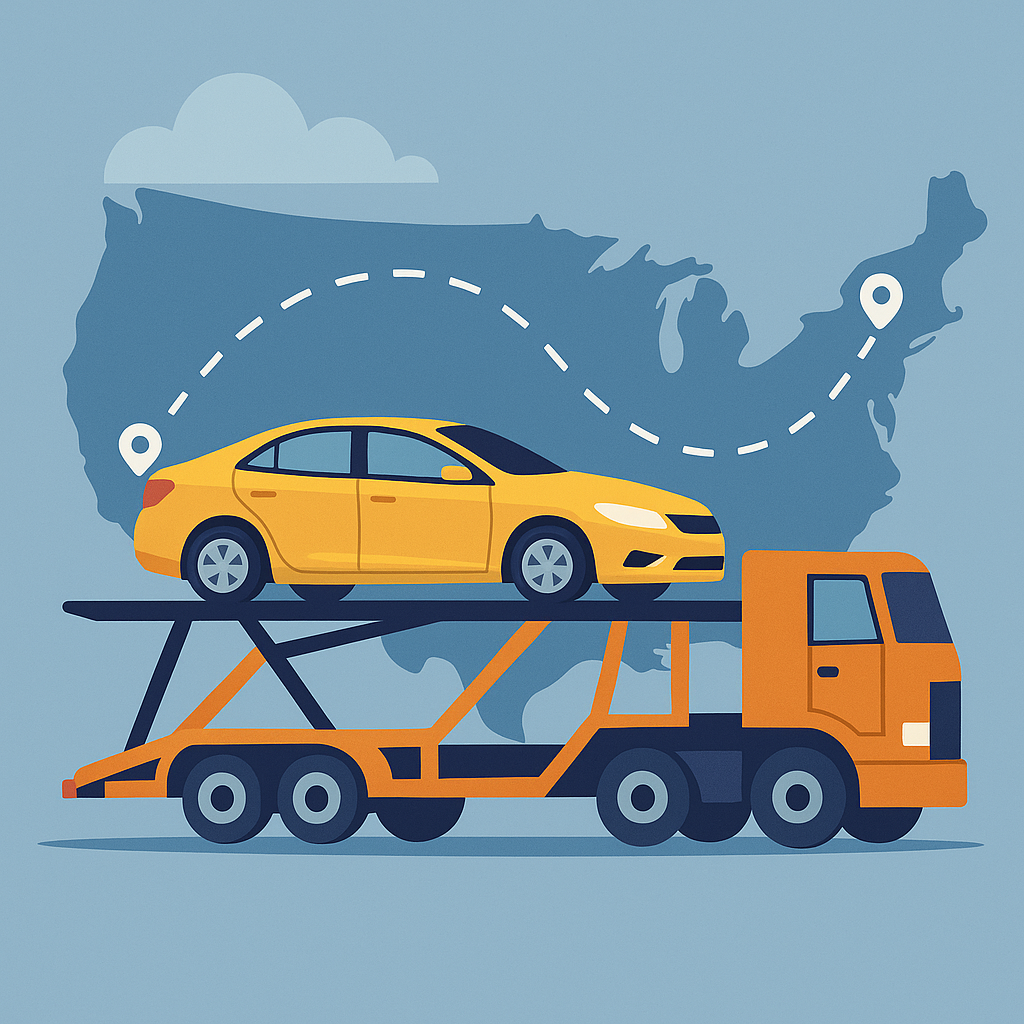Big move coming up, too many lists, not enough hours. I hear it all the time. In that swirl, moving your car to another state feels like the one task that can’t be left to chance. Some people decide to drive the distance. Others hand the keys to a carrier and keep their energy for packing, work, and family. I haul across long routes, and the pattern stays steady: choose a service type, prep the vehicle, agree on a pickup window, and let the miles pass without drama. Rates shift by route, season, and trailer style. If you want a price frame before you talk to anyone, this breakdown helps set expectations by distance and service: car shipping costs.
Two trailer choices cover most moves. Open carriers run more lanes and keep the bill lower. Enclosed carriers shield paint and trim, and they cost more. A compact sedan is easier to fit than a lifted SUV. City cores ask for patience, rural handoffs ask for planning. None of it is mysterious once you see the job as a short list of steps.
Step-by-step car shipping guide
- Confirm the company. Look up licensing and insurance. Scan recent feedback that mentions pickup windows, steady updates, and condition on delivery.
- Pick open or enclosed. Daily drivers and tighter budgets tend to ride open. High-value, classics, or fresh paint often go enclosed. If you want a full walk-through from inquiry to delivery, use this page as a prep map: how to ship a car.
- Get quotes in writing. You want a pickup window, a delivery range, what the rate includes, and a direct number for dispatch or the driver.
- Book ahead. Summer, month ends, holiday stretches, and snowbird seasons fill routes fast. A little lead time helps pricing and timing.
- Prepare the vehicle. Wash it so photos show every panel. Take dated shots of all sides, the roof, wheels, and interior. Fold mirrors. Remove toll tags, parking passes, and personal items.
- Fuel level. Leave about a quarter tank. Enough to load and unload without hauling extra weight.
- Plan access. Long rigs need turning room. If your block is tight, pick a nearby wide lot and share a pin with the driver.
- Meet at pickup. Walk the car with the driver. Notes go on the Bill of Lading. Both of you sign after you agree on the record.
- Stay reachable. Keep your phone on during the window and again near delivery. Missed calls create long delays fast.
- Inspect at delivery. Match the vehicle against your photos and the paperwork before you sign off. Questions get handled on the spot.
The first stage of the interstate auto transport process is pickup and loading. The driver arrives inside the window, lines up ramps or a lift, and sets the vehicle on a position that balances weight across the trailer. Wheel straps or chains lock at the right points. A good driver rechecks tie-downs after the first few miles and again at fuel stops. The car stays parked for the entire run. No extra miles, no surprise detours behind the wheel.
The second stage of the interstate auto transport process is delivery and handoff. Big trucks don’t love cul-de-sacs, tight alleys, or low branches. A nearby wide street or shopping center lot solves that in minutes. Once the car is on the ground, both of you walk it again. Mileage gets confirmed, notes get compared to the original Bill of Lading, and any difference gets written before signatures. Most days there’s nothing new to note and the closeout takes a couple of minutes.
Now to a few state-to-state moving tips that pay off. Book early if your dates are fixed. Last-minute requests can cost more and limit route options. Share a second contact in case your phone dies mid-route. Expect a time window, not a to-the-minute appointment. Weigh stations, crosswinds, and city traffic don’t always cooperate with tight clocks. A small buffer keeps everyone sane.
Another batch of state-to-state moving tips focuses on vehicle readiness. Check tire pressure and battery charge the day before. Disable alarms so nothing chirps at 3 a.m. during a fuel stop. Remove racks or antennas that extend higher than the roof line. If the car has quirks, say so. A trunk that only opens with a key or a starter that sticks isn’t a deal breaker. It just tells the driver where to position the car on the trailer and which tools to keep handy.
About pricing: popular lanes usually come in lower per mile because trucks fill fast. Short hops can look high per mile because base expenses spread across fewer miles. Long hauls look friendlier per mile but add up in total. Open carriers trim the bill, enclosed adds protection at a premium. That cost page above lays out typical ranges by route and service so you aren’t guessing. Again, here’s the link for quick reference: car shipping costs.
Paperwork can be light and straightforward. The Bill of Lading is the core record. Your photos back it up. Licensed carriers carry coverage for vehicles on board; ask for a certificate if you want one for your files. Some teams take a deposit, others settle on delivery. Many still prefer certified checks, and some accept cards for deposits. Talk money and method before the truck is in view so nobody is guessing at the curb.
Communication helps more than any fancy gadget. Drivers call when they’re close. If your street has tight turns, send a short video the day before so the driver can choose a workable spot. Label the key you hand over. Keep documents in a single envelope. Small habits like that shave minutes at pickup and keep the route on pace.
FAQ: Common mistakes when shipping a car
Chasing the lowest number on a quote sheet
A bargain can hide weak coverage, vague windows, or add-on fees. Aim for a fair rate backed by steady reviews and a direct contact you can reach.
Leaving belongings in the cabin or trunk
Loose items shift and scuff panels. Carriers don’t cover personal property. Keep the interior empty. Floor mats and a charging cable are fine. Bags and tools are not.
Skipping photos before pickup
Dated shots of each panel, the roof, wheels, and interior shorten any conversation at delivery. Take them right after the wash in decent light.
Forgetting the quarter-tank guideline
Too much fuel adds weight. Nearly empty can stall loading if the driver needs to shuffle positions on the trailer. A quarter tank works well for most runs.
Not mentioning a mechanical quirk
Weak battery, sticky window, touchy alarm – say it up front. Surprises waste time. A short heads-up lets the driver choose a safe trailer spot and bring the right gear.
Expecting exact arrival times
Interstate work runs on windows. Weather, construction, and weigh stations change pacing. Keep a buffer and a backup meeting spot and the handoff stays calm.
Ignoring access planning
Long rigs need space. If your street is narrow, pick a nearby lot in advance and send a pin. Five minutes of planning beats an hour of circling.
Paying without reading terms
Know deposit policy, balance method, storage rules, and change fees. Get it in writing before the truck rolls.
Rushing the delivery walkthrough
Walk the car, match your photos to the Bill of Lading, and only then sign. If anything looks new, it gets written right away.
Moving your car to another state doesn’t have to drain your time or patience. Pick a trailer style that fits your comfort level, book with a little lead time, prep the vehicle, and meet the driver with a calm checklist. Do those pieces, and the miles in between stay quiet while you focus on the rest of the move.


